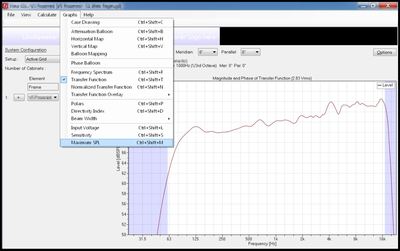This is a review and detailed measurements of the KEF Ci200RR-THX in-ceiling/in-wall speaker. It was kindly sent to me by a member and costs US $999.99.
View attachment 282661
Speaker has a luxurious feeling rubberized paint outside of the driver. Alas, as you see, it is a dust magnet. Fortunately you would cover the whole thing with a grill anyway. The design is coaxial with tweeter in the middle as you would expect from KEF. Unlike many in-ceiling speakers we have tested the drivers are not angled and hence the reason company says you could even use them for side and surround channels in home theater environment.
There is good bit of weight to the unit although not the heaviest I have tested. Here are the specs:
View attachment 282662
Here is the back side:
View attachment 282663
And a peak at the crossover:
View attachment 282664
Speaker was measured using a special mode of Klippel Near-field Scanner where you mount the speaker to a baffle and through clever signal processing, the sound from backside and edges of the baffle are filtered out. Result is anechoic response of the speaker. The reference point was naturally center of the tweeter.
KEF Ci200RR-THX Speaker Measurement
Since this is a "normal" speaker design, we can start with our standard frequency response measurements:
View attachment 282665
As much as this looks a ton better than any in-ceiling speaker we have tested at 0 degrees, I was still dismayed a bit with the three or so humps. Fortunately if you use this for Front and Back Atmos height channel, you would be experiencing at an angle that actually measures better:
View attachment 282667
Assuming you mount this speaker on a wall, here is our standard early reflections and predicted in-room responses:
View attachment 282668
View attachment 282669
The coaxial driver delivers as far as excellent directivity:
View attachment 282670
View attachment 282671
View attachment 282672
As noted, don't go past 50 degrees as then you will have a shortfall above 7 kHz (blue region).
Bass impedance is decently above 4 ohm which is good:
View attachment 282673
There is a minimum around 7 kHz which should not be an issue as there is not a ton of spectrum out there but even if there is, amps should be able to handle that.
I was very happy to see the low distortion measurements:
View attachment 282674
View attachment 282675
Finally, here are the waterfall and step responses:
View attachment 282676
View attachment 282677
Conclusions
Most of the market of in-ceiling speakers has dual driver with the tweeter blocking the woofer. This causes reflections and comb filtering. Angling the driver as is often done, focuses the highs toward the listener (hopefully) but then severely compromises off-axis response. The KEF Ci200RR-THX solves both of these problems by putting the tweeter at the center of the woofer and thereby giving us excellent directivity to position the speaker as we see fit. Response could have been flatter but all of these home theater systems have EQ enabled so that should be a solvable problem. The only negative is the high cost at $1000.
I am going to add the KEF Ci200RR-THX to my recommended list. It is the only proper way to build a ceiling speaker in my opinion especially for height channels.
------------
As always, questions, comments, recommendations, etc. are welcome.
Any
donations are much appreciated using
: https://www.audiosciencereview.com/forum/index.php?threads/how-to-support-audio-science-review.8150/


